Gone are the days of beating around the bush and euphemisms about the birds and the bees. Here guest writer Susan gives us the rundown on books for kids about puberty, sex, bodies, gender, and relationships. Susan is a journalist, author and parent. We’ve redacted her last name at her request because it might be embarrassing for her kid later. No kid wants to be embarrassed by their mum.
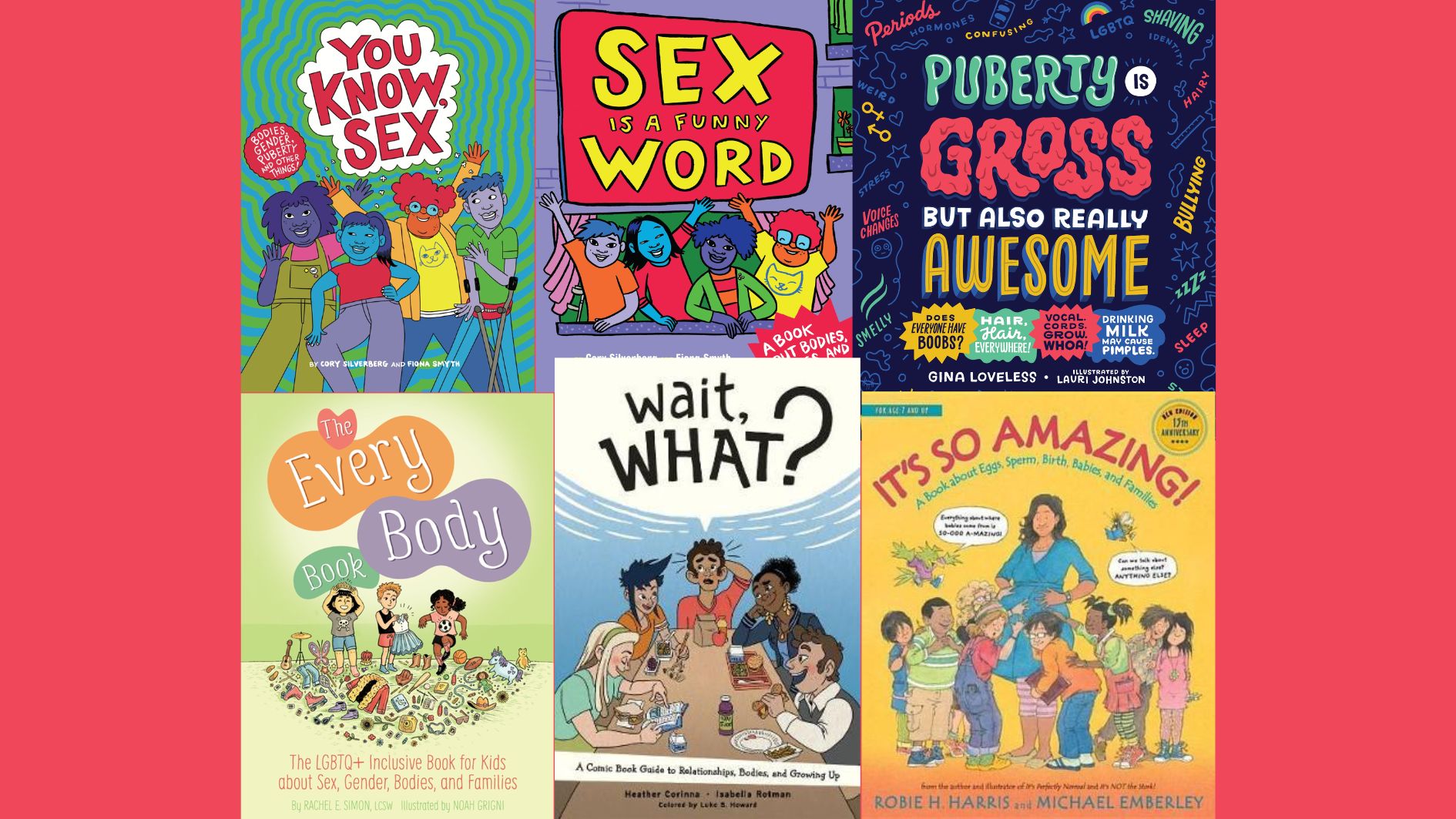
I’ve always tried to be the sort of parent who is open to answering my kids’ questions as they arise, even if that means tackling “why are you bleeding from your bum?” in the supermarket checkout line.
It seemed a better approach than scheduling a “big talk” at some (probably too late) stage to explain to my kids the mechanics of baby making and puberty.
But when I discovered my eight-year-old son had somehow worked around the security settings on his iPad and ended up on some extremely NSFW sites in his quest for information about “girls’ bits”, I realised my efforts might not have been as conscientious as they could have been.
So we set out to do some reading together to arm him with the information he was looking for, with a side serving of the inclusive messaging and sex and body positivity I hoped to impart.
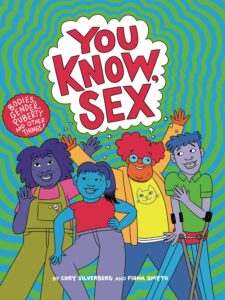
You Know, Sex by Cory Silverberg and Fiona Smyth (Seven Stories Press)
This was one of best of the books we sampled, although it was a little daunting at first.
The first page describes it as “a lot” and that’s a fair way to sum it up. Running to more than 400 pages, it tackles everything from “what is sex?” to anatomy, gender identity and the physical changes of puberty.
Having recently been told “my body, my choice” by a kid who didn’t want to put his seatbelt on…
Having recently been told “my body, my choice” by a kid who didn’t want to put his seatbelt on, I liked the sidenote of it being fine for parents to insist on some safety measures, such as a helmet when riding a scooter, while still explaining the importance of bodily autonomy.
There is a lot of information in this book, all presented in a comic format that held my kid’s attention well. It features people of lots of different colours, albeit mostly purple, green and blue – and all sexual orientations.
The tone is chatty but not patronising and bodies are described as “someone with a penis” or “someone with a uterus” rather than male or female, with matter-of-fact reference to things such as safe binding.
An explanation of consent using the example of borrowing a pen from a classmate is really engaging and clear.
You Know, Sex takes the perspective that most sex doesn’t involve penises in vaginas, which is useful for kids not keen on that prospect or comfortable with it yet, and quite different from the messaging I remember from my teen years when it was PIV or nothing.
Recommended age range: 10-14
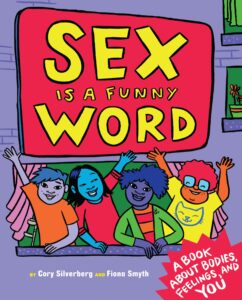
Sex is a Funny Word by the same authors should also get an honourable mention, aimed at a younger audience and another really good resource.
Recommended age range: 8-11
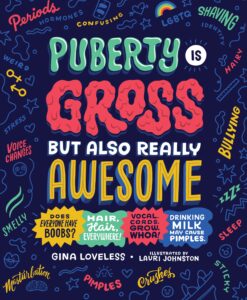
Puberty is Gross but also Really Awesome by Gina Loveless (Rodale Kids)
I didn’t expect to learn much that was new during the exercise of reading countless puberty and sex books, but this one proved me wrong.
Did you know that eating apples and kale may lead to later breast development? Or having an absent father between ages 11 and 16 can cause delays in voices breaking? Or that early growth spurts are linked to near-sightedness? This was all news to me and these odd factoids dotted through the book kept my kid interested, too.
The author notes that she aims to be as inclusive as possible, down to how she refers to the adults in kids’ lives. Sometimes they are foster parents, sometimes grandparents, sometimes mother and father.
Discussions about kids’ use of the internet can quickly become dated in books like this but Puberty is Gross managed to feel relevant and useful
This was the first time I had seen the process of puberty compared to losing baby teeth and adult teeth taking their place – this was useful for my kid who is well acquainted with the tooth fairy but still trying to work out the rest of it.
The “is this weird” sections answer lots of questions and the tone is light-hearted and chatty.
Discussions about kids’ use of the internet can quickly become dated in books like this but Puberty is Gross managed to feel relevant and useful – and I really rated the chapter about sleep, which also includes tips for falling asleep, which no one in my household but me seems able to master.
Recommended age range: 9-12
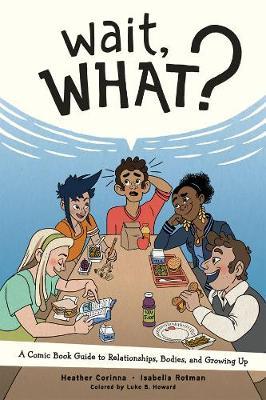
Wait what? A comic book guide to relationships, bodies and growing up by Heather Corinna and Isabella Rotman (Limerence press)
This came in as third favourite for us, and is produced by the team at Scarleteen, an online sex education resource. Again, the book doesn’t take a gendered view on bodies and uses a cute “are you a cat or dog person” analogy to discuss the fluidity of sexual orientation.
It was helpful for prompting a discussion about how the sex that you see on TV or on the internet isn’t real – and it provided a useful rundown of the potential risks and things to think about with sex.
There’s more of a focus on sex and relationships than the bodily aspects of puberty
The tone is light and easy, again delivered in comic book style, but also manages to dispel a lot of the rubbish that kids hear. There’s more of a focus on sex and relationships than the bodily aspects of puberty – although there’s a notable illustration of weird genitals that captured my kid’s imagination. The book finishes by advising kids to assemble a “super team” to help them through the next few years, including adults they can trust.
Recommended age range: 9-14
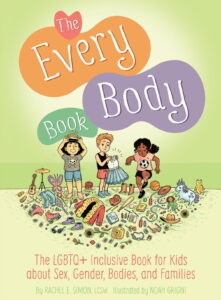
The Every Body Book by Rachel E Simon (Jessica Kingsley publishers)
The every body book is written by a clinical psychotherapist and sexuality educator who says she wants to offer a more inclusive view of sexuality. She’s achieved that aim – the book has a good discussion of gender identity and a chapter on gender dysphoria. The chapter about pregnancy and birth deliberately refers to “parents” rather than “mothers”.
It provides a great overview but is less in-depth than some of the other books we read, running only to 100 pages. This could be a good first step for those who want something quick and easy for their kids.
Recommended age range: 8-11
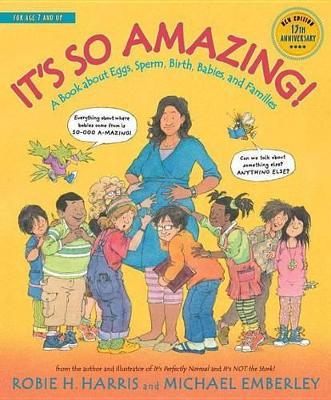
It’s So Amazing by Robie H Harris and Michael Emberley (Candlewick Press)
I was recommended this book by a friend who is a GP and said it was popular with other “medical mums”.
It’s not the most inclusive on the gender front – that’s probably a reflection of it having first been published in 1999. But the style is engaging and simple, which fits the intended audience of 7-plus.
The focus is clearly on heterosexual sex, but largely in the context of how babies are made. Other sexual orientations are touched on in a discussion about love. If you’re after a basic explanation of what might be ahead in the coming years, this will tick that box but I’d follow it up with some of the other options above. A chapter about HIV and AIDS feels a bit out of place.
Recommended age range: 7-10
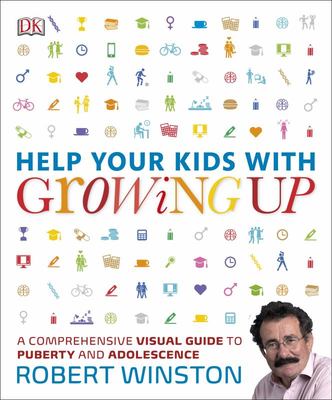
Help Your Kids With Growing Up by Robert Winston (DK)
This feels like the sort of book that’s aimed at parents who want to arm themselves with scientific information in the hope of avoiding embarrassment. I found parts of it really interesting but I didn’t feel that being able to tell my kids what sort of hormone (GnRH or HL and FSH) was kicking off which part of their puberty experience was going to prove particularly useful in practice – it’s always seemed that the social rather than the physical aspects of this time are the trickiest. But the book includes a surprisingly good section on healthy relationships, gender and equality. This is the kind of thing you stick on your shelf and refer to when you want to arm yourself with information for a conversation rather than something your child will read from start to finish.
Recommended age range: Adult

Susan
Susan is a journalist who lives in Northland. She has two kids, aged 5 and 8, and writes fiction in her spare time. Her first two novels, Mummy Needs a Break and Mummy Needs Help are published by Harper Collins.



